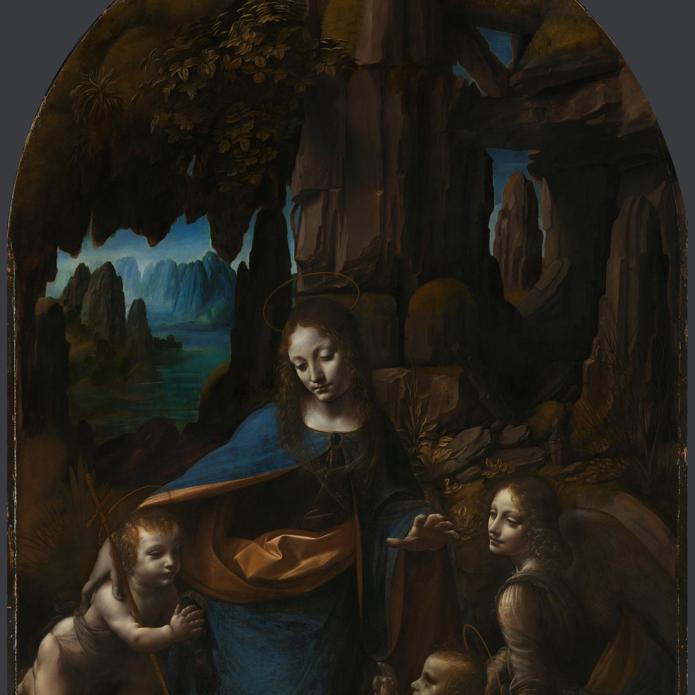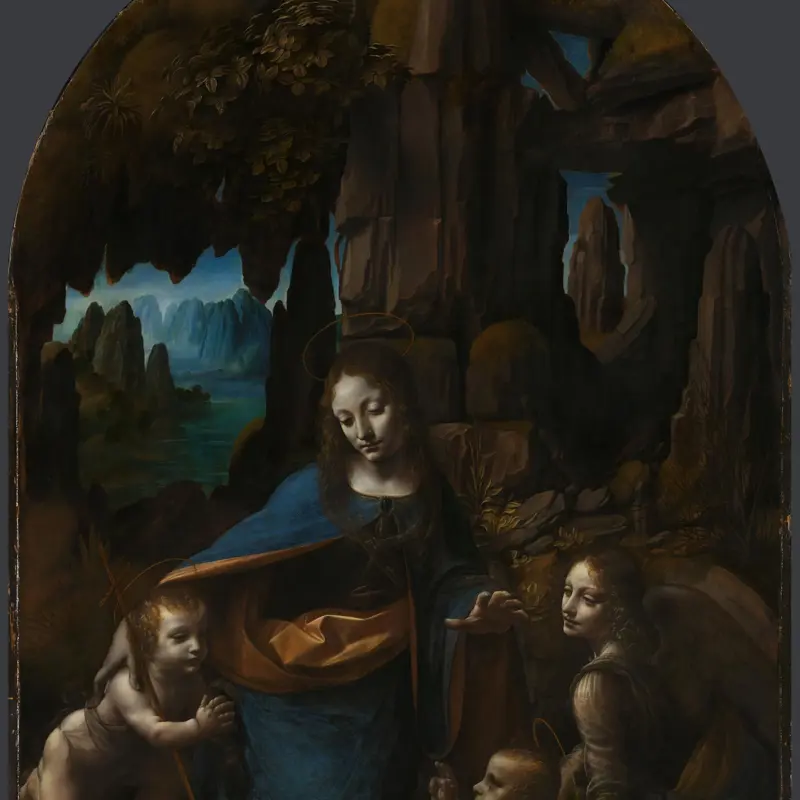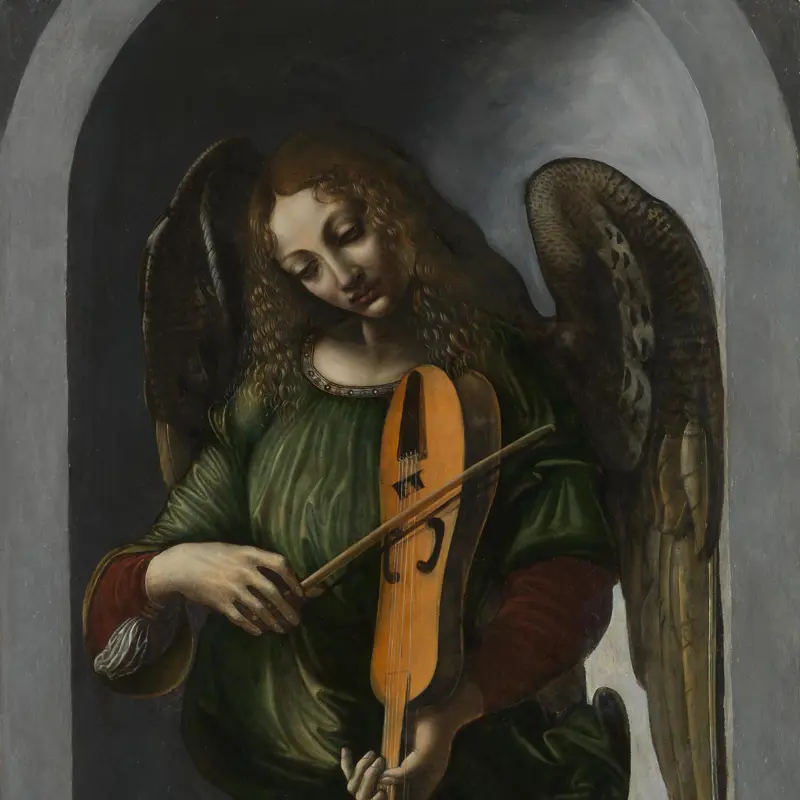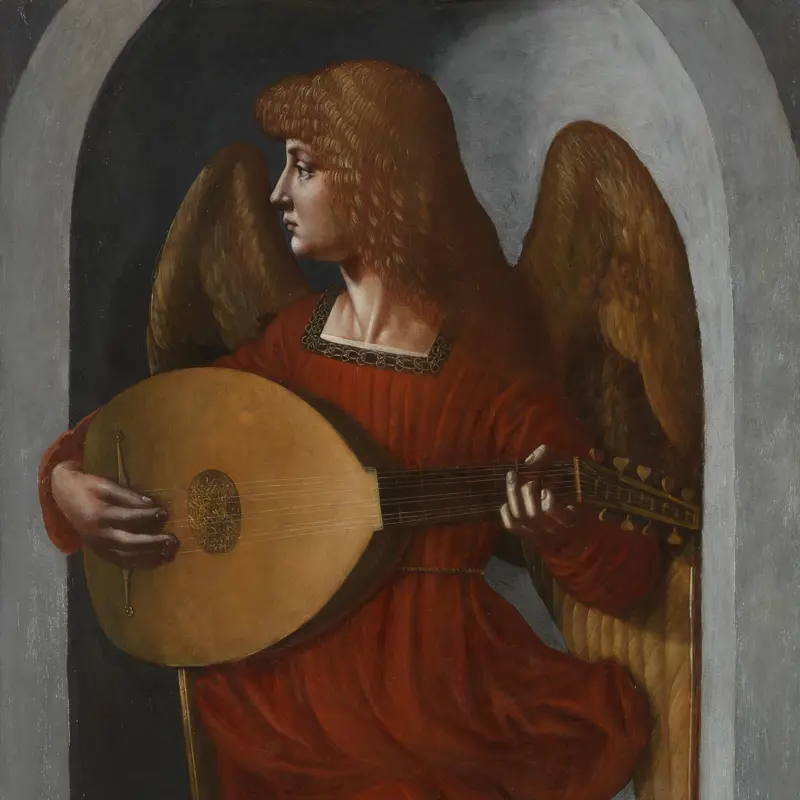Giovanni Ambrogio de Predis, 'An Angel in Red with a Lute', about 1495-9
About the work
Overview
This angel is a pair to another in the National Gallery’s collection. Both were part of a large altarpiece made for the church of San Francesco Grande in Milan that included Leonardo’s ‘Virgin of the Rocks’, which is also in our collection. They were made to surround a sculpture of the Virgin Mary which stood above Leonardo’s picture.
Ambrogio de Predis and Leonardo were both named on the contract for the altarpiece which specifically asked for angels playing music. Here the angel plays a lute but looks distracted, apparently focusing on the statue of the Virgin Mary instead. The grey niche he stands in is a later addition.
Key facts
Details
- Full title
- An Angel in Red with a Lute
- Artist
- Giovanni Ambrogio de Predis
- Artist dates
- About 1455 - 1510
- Part of the series
- Panels from the S. Francesco Altarpiece, Milan
- Date made
- About 1495-9
- Medium and support
- Oil on wood (poplar, identified)
- Dimensions
- 118.8 × 61 cm
- Acquisition credit
- Bought, 1898
- Inventory number
- NG1662
- Location
- Not on display
- Collection
- Main Collection
Provenance
Additional information
Text extracted from the ‘Provenance’ section of the catalogue entry in Martin Davies, ‘National Gallery Catalogues: The Earlier Italian Schools’, London 1986; for further information, see the full catalogue entry.
Exhibition history
-
2011Leonardo da Vinci: Painter at the Court of MilanThe National Gallery (London)9 November 2011 - 5 February 2012
Bibliography
-
1951Davies, Martin, National Gallery Catalogues: The Earlier Italian Schools, London 1951
-
1986Davies, Martin, National Gallery Catalogues: The Earlier Italian Schools, revised edn, London 1986
-
2001
C. Baker and T. Henry, The National Gallery: Complete Illustrated Catalogue, London 2001
About this record
If you know more about this work or have spotted an error, please contact us. Please note that exhibition histories are listed from 2009 onwards. Bibliographies may not be complete; more comprehensive information is available in the National Gallery Library.
Images
About the series: Panels from the S. Francesco Altarpiece, Milan

Overview
These three panels all came from an elaborate, and partly sculpted, altarpiece that was made for the church of San Francesco Grande, Milan. By the time that Leonardo and his associates were commissioned to provide paintings in 1483, the sculptor Giacomo del Maiano had already finished the sculptures.
The altarpiece stood in a chapel devoted to the Immaculate Conception of the Virgin Mary that belonged to a confraternity (religious group) devoted to the Immaculate Conception. The two angels playing musical instruments probably stood on either side of a large sculpture of the Virgin. Leonardo’s painting, which was probably supposed to represent the Immaculate Conception, was placed directly beneath the sculpture.
The National Gallery’s painting is Leonardo’s second version of the picture. It was probably made to replace one (now in the Louvre, Paris) that Leonardo sold because the confraternity refused to pay him adequately for it.




